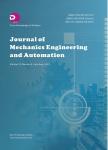Non-saturation Throughput of S-ALOHA Using the Time-Scale Decomposition Technique
Non-saturation Throughput of S-ALOHA Using the Time-Scale Decomposition Technique作者机构:SEPI ESCOM Mobile Computing Department National Polytechnique Institute (IPN) Mexico City 07738 Mexico Communication and Computer Network Laboratory Computing Research Center (CIC-IPN) National Polytechnique Institute(IPN) Mexico City 07738 Mexico
出 版 物:《Journal of Mechanics Engineering and Automation》 (机械工程与自动化(英文版))
年 卷 期:2014年第4卷第2期
页 面:116-122页
学科分类:080904[工学-电磁场与微波技术] 0810[工学-信息与通信工程] 0809[工学-电子科学与技术(可授工学、理学学位)] 07[理学] 070601[理学-气象学] 08[工学] 080402[工学-测试计量技术及仪器] 0804[工学-仪器科学与技术] 0706[理学-大气科学] 081001[工学-通信与信息系统]
主 题:S-ALOHA non-saturation conditions infinite and finite population model time-scale decomposition.
摘 要:S-ALOHA (Slotted ALOHA) random access protocol is a widely used protocol mainly for the transmission of short packets in wireless networks. Most papers consider either an infinite population model where the impact of the backoff protocol cannot be adequately evaluated or a finite population model where the number of nodes is fixed. In this letter, a combination of both models is proposed using the time-scale decomposition technique. This methodology allows to study the system under more realistic conditions where the dynamics of users enter and leaving the system are reflected on the performance of the system as well as the impact of the backoff protocol. Also, it allows studying the system in non-saturation conditions. The proposed methodology divides the analysis in two parts: packet-level and connection-level. This analysis renders suitable results when the time scale of the packet level and connection level statistics is different. On the other hand, when these scales are similar, the proposed methodology is no longer suited.



